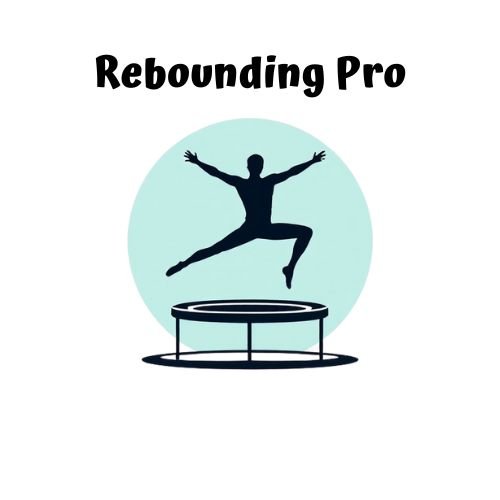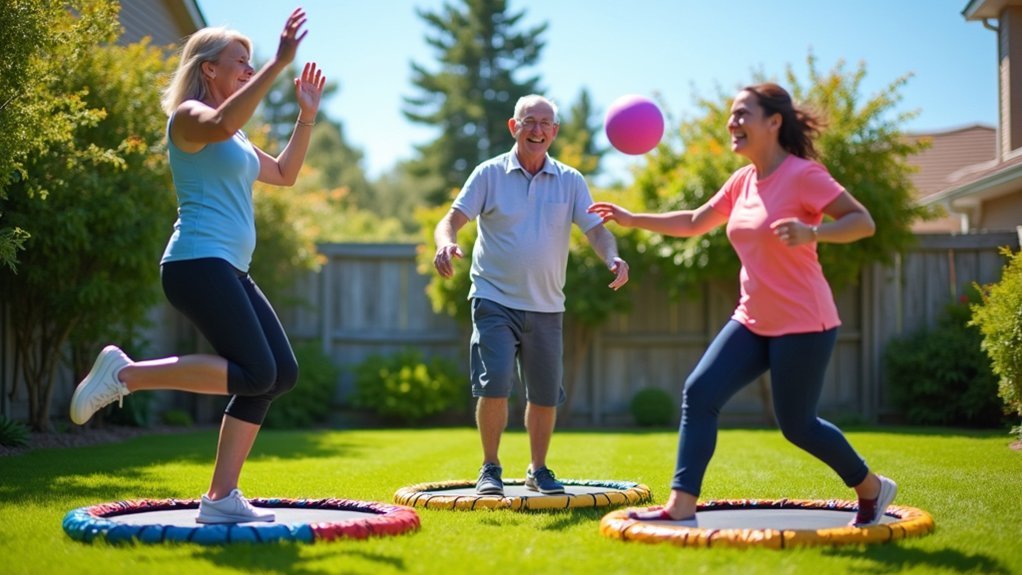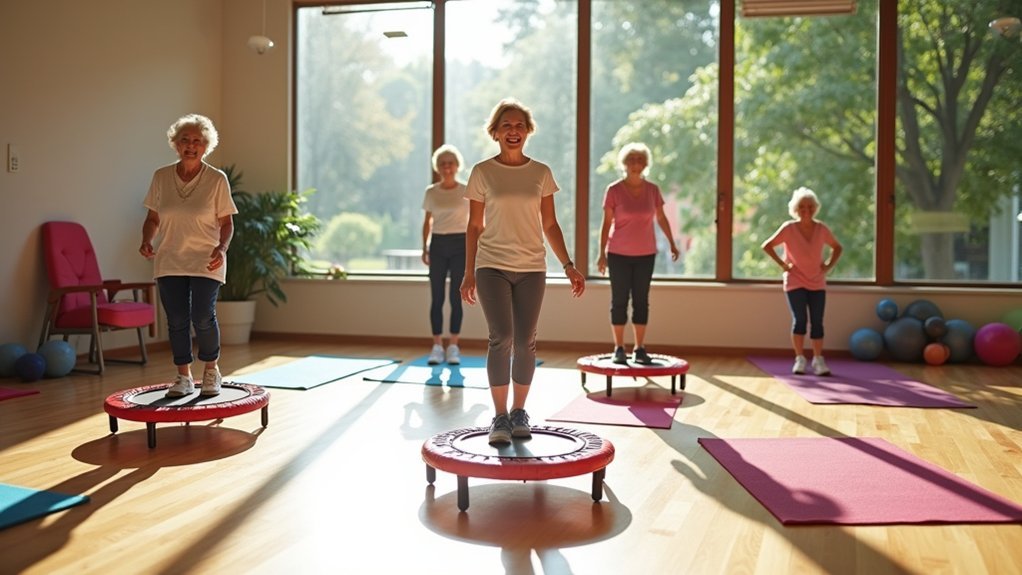For seniors using trampolines, try these three effective core exercises: Seated Core Twists to improve balance and spinal flexibility, Gentle Bounce Crunches to strengthen abdominals while protecting joints, and Standing Side-to-Side Steps to enhance lateral stability. Position your trampoline near a wall for safety, wear non-slip shoes, and maintain proper posture throughout each movement. These low-impact exercises can greatly improve your core strength, reducing fall risk and supporting daily activities.
Seated Core Twists for Balance and Stability

As we age, maintaining a strong core becomes essential for everyday movements and preventing falls. Seated core twists on a trampoline offer an innovative, low-impact approach to strengthen your abdominal and back muscles while enhancing balance.
To perform this exercise, sit comfortably on your trampoline with your feet flat and knees bent. Place your hands lightly on your shoulders or extend them in front of you. Gently twist your upper body to one side, then return to center before twisting to the opposite side.
This twisting motion promotes spinal flexibility, reduces back pain risk, and improves posture. You’ll notice the exercise engages your core while demanding control and coordination—key elements for maintaining stability. Mini-trampoline exercises can provide a low-impact exercise alternative that’s particularly beneficial for seniors with arthritis.
Best of all, you can easily adapt these twists to match your fitness level.
Gentle Bounce Crunches for Abdominal Strength
While seated twists help improve rotational strength, adding gentle bounce movements takes your core workout to the next level. On your trampoline, begin with feet barely leaving the surface while tensing your abdominal muscles during each bounce.
You’ll find this low-impact exercise especially beneficial if you have joint concerns. As you bounce, incorporate gentle twists to engage your obliques or add light hand weights to increase the challenge. Maintain proper posture throughout to effectively target core muscles.
Start with short sessions and gradually increase duration as your strength improves. Try alternating between gentle and slightly higher bounces to enhance both cardiovascular benefits and core engagement. Always maintain a micro bend in knees and slight forward hinge at the waist for proper form during bounces.
Remember to breathe deeply while exercising – this enhances stability while ensuring you’re getting oxygen to working muscles.
Standing Side-to-Side Steps for Lateral Core Engagement

Three key dimensions of core fitness often get overlooked in traditional workouts: lateral strength, balance, and coordination. Standing side-to-side steps on your trampoline effectively address all three while engaging your obliques and core stabilizers.
To perform this exercise safely, position your trampoline against a wall if you need extra support. Wear non-slip footwear and start with a gentle warm-up. As you step side to side, focus on consciously engaging your core throughout the movement. The trampoline’s bounce and flexibility adds a unique challenge that strengthens the abdominal and back muscles simultaneously.
Safety first: position trampoline near a wall, wear non-slip shoes, warm up, and maintain core engagement throughout your side steps.
You can easily modify this exercise based on your fitness level—reduce the step width, hold onto a stable object, or eliminate the bounce entirely.
For added challenge, incorporate isometric holds between steps. This exercise not only strengthens your core but also improves balance and mobility, reducing fall risk.
Frequently Asked Questions
How Long Should Seniors Bounce on a Trampoline Each Session?
Start with 10-15 minute sessions and gradually increase by 1-2 minutes weekly as you build strength. You’ll benefit most from 3-4 weekly sessions, though beginners may start with just 5-10 minutes per session.
Can Seniors With Joint Replacements Safely Use Trampolines?
You should consult your orthopedic surgeon first. If approved, use mini-trampolines with handrails, stick to gentle bounces, and limit sessions to 5-15 minutes. Never jump unsupervised with joint replacements.
What Size Trampoline Is Best for Senior Core Exercises?
Choose a compact 38-44 inch mini trampoline for your core exercises. You’ll get enough space for movement while maintaining stability. Foldable options are ideal if you’re concerned about storage in your home.
Are Mini-Trampolines With Handlebar Supports Worth the Extra Cost?
Yes, mini-trampolines with handlebar supports are worth the extra cost. You’ll gain stability, confidence, and safety while exercising. This small investment prevents falls and encourages longer workouts, making it a valuable safety feature.
How Quickly Will Seniors Notice Balance Improvements From Trampoline Workouts?
You’ll typically notice initial balance improvements within 2-3 weeks of consistent trampoline workouts. With regular practice, you’ll experience more significant changes in stability and confidence over 2-3 months of rebounding.
In Summary
By incorporating these three trampoline core exercises into your fitness routine, you’ll build strength, improve balance, and enhance overall stability. Start slowly and listen to your body as you progress. Remember, even gentle bouncing activates your core muscles more effectively than floor exercises. You’re never too old to enjoy the benefits of trampoline workouts—they’re fun, effective, and gentle on your joints.





Leave a Reply